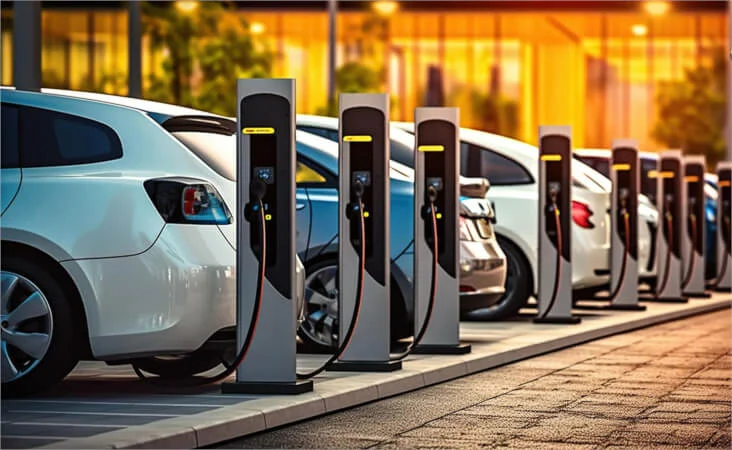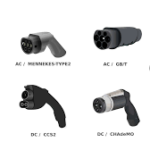As the world progresses toward a greener future, electric vehicles (EVs) are taking center stage. Industry forecasts predict that EVs will comprise 40% of global car sales by 2030, underscoring a monumental shift from fossil-fuel reliance to cleaner, sustainable motoring. This evolution is no longer merely about observing the growth of a niche industry but marks a transformative era in the global automotive landscape.
However, despite growing optimism, the pace of EV adoption remains dictated by a complex interplay of human behavior, infrastructure readiness, and environmental conditions. The immediate challenge lies not in convincing consumers of EV benefits but in ensuring the charging network is sufficiently robust to sustain widespread use.
Defining the Scope of Widespread EV Adoption
In 2020, global EV sales barely crossed 2 million units, a stark contrast to the projected 73 million by 2040. While these figures signal promise, the notion of “widespread adoption” remains premature. In the United States alone, out of 289 million registered vehicles, only 2 million are electric.
Yet, the trajectory mirrors the rapid rise of smartphones—an industry where a technology once rare became ubiquitous within a decade. As the average vehicle lifespan is roughly 12 years, the proportion of EVs on the road will inevitably skyrocket as aging internal combustion engine (ICE) vehicles are replaced.
“The EV market’s evolution is not just about innovation; it’s about ensuring that every driver, regardless of demographic or geography, sees EVs as a seamless, superior alternative.”
Human-Centric Factors: The Driver’s Perspective
The consumer remains at the heart of EV adoption. While manufacturers showcase ambitious innovation, it is the individual driver who must find these vehicles to be safe, affordable, and practical. Without sufficient infrastructure and incentives, adoption will remain stunted, particularly in comparison to the European Union and China, where EV adoption has surged.
1. Demographics and Behavioral Shifts
Although awareness about EVs is widespread, generational divides influence purchasing patterns. Younger drivers (18-25 years) exhibit higher intent to buy EVs, with 30% planning to do so. However, the majority of Americans—58%—still prefer gasoline vehicles. This hesitancy, especially among older drivers, emphasizes the need to present EVs as cost-effective and high-performing alternatives.
2. Charging Infrastructure Availability
The most cited barrier to EV adoption is the availability of charging stations, with 49% of potential buyers expressing concern. As of May 2023, the United States had 138,100 charging outlets, nearly a third located in California. This leaves vast regions, particularly the Great Plains, underserved, challenging the feasibility of EV ownership in rural areas.
3. Charging Speeds
The time required to charge is a frequent concern. Modern Level 3 chargers can replenish 80% of a vehicle’s battery in 20 minutes, but Level 1 and Level 2 chargers, commonly used in homes and public spaces, remain significantly slower. Innovations in battery algorithms and cooling technologies aim to shorten charging times, alleviating range anxiety among drivers.
4. Cost and Financial Parity
While 67% of consumers cite cost as a major obstacle, falling battery prices, increased market competition, and government subsidies are closing the gap between EVs and their gasoline counterparts. Key programs like the $5 billion NEVI initiative provide substantial funding for DC Fast Charging networks, ensuring consistent reliability and accessibility. Moreover, the inclusion of tax incentives for EV purchases under the Inflation Reduction Act makes ownership increasingly appealing.
| Cost Reduction Programs | Description |
|---|---|
| NEVI Program | Provides up to 80% funding for qualified charging infrastructure projects. |
| Inflation Reduction Act | Extends EV tax credits for new, used, and commercial vehicles through 2032. |
| Local Incentives | States like California mandate zero-emission vehicle sales by 2035, driving competition. |
Manufacturing and Market Dynamics
The burden of meeting consumer demand no longer rests solely on early pioneers like Tesla, which produces around 1.8 million EVs annually. Established players such as Ford and General Motors are rolling out dedicated EV lines, while newcomers like Lucid and Nikola are disrupting the market.
1. Incentives and Legislative Support
The extension of EV tax credits through 2032 significantly reduces upfront costs for consumers. Additionally, legislative mandates, such as California’s zero-emission vehicle law, exemplify how policy can accelerate change. This approach is being adopted by other states, including Massachusetts and New York, signaling a nationwide shift.
2. Charging Infrastructure Development
The Infrastructure and Jobs Act, with its $7.5 billion allocation, aims to establish a network of 500,000 EV chargers, particularly along interstate highways. Companies like EV Connect are leveraging these incentives to deploy charging stations at scale, ensuring consistent uptime and adherence to stringent cybersecurity and data reporting standards.
“Infrastructure is the backbone of adoption. Without reliable, accessible chargers, even the most advanced EV is just a concept.”
Environmental Considerations
A unified national commitment is critical to achieving the 50% EV market share goal by 2030. While California leads with its stringent emissions standards, 14 other states have adopted similar targets, setting a precedent for broader environmental accountability.
1. Fleet Electrification
Fleet managers are exploring EVs for cost savings and emission reductions. Government-backed initiatives reduce the financial burden of deploying zero-emission fleets, aligning corporate operations with sustainability goals.
2. Grid Resilience and Sustainability
The rise of EVs necessitates the development of a resilient national grid. Two key elements are pivotal:
- Open Charging Platforms: Compatibility across models ensures seamless access to charging networks.
- Smart Charging Solutions: Innovations like vehicle-to-grid (V2G) technology and solar-powered stations enhance sustainability.
Pioneering Innovation: Shaping the EV Future
The future of EVs hinges on relentless technological advancements. Key areas of innovation include:
1. Advanced Batteries
The growing demand for lithium has spurred exploration into solid-state batteries, which offer faster charging and ranges exceeding 745 miles. Alternatives like graphene and sodium-ion technologies are also gaining traction, promising cleaner energy solutions.
The Path to Full-Scale EV Adoption
The road to ubiquitous EV adoption is an intricate balance of factors. It’s not merely a technological revolution but a systemic transformation involving consumers, manufacturers, policymakers, and innovators.
“It’s no longer a question of if the EV transition will occur—it’s a matter of when.”
| Factors Influencing EV Adoption | Significance |
|---|---|
| Consumer Trust | Building confidence in EV cost, performance, and infrastructure. |
| Manufacturing Scale | Meeting demand with reliable, affordable vehicle options. |
| Legislation and Incentives | Accelerating adoption through policy-driven incentives. |
| Technological Advancements | Driving innovation in batteries, charging speed, and range. |
Final Thoughts
The shift to electric vehicles signifies more than just an industry trend—it represents a profound cultural and environmental transformation. As infrastructure develops, costs decline, and innovation flourishes, the barriers to adoption will continue to fall. Stakeholders across the spectrum must collaborate to ensure the EV market not only thrives but becomes the default mode of transportation for future generations.
Sources
- Center for Sustainable Energy: “The State of Electric Vehicle Adoption in the U.S.”
- Government Technology: “Barriers to Full-Scale EV Adoption”
- Forbes: “Growing EV Adoption: Solutions on the Horizon”
- Bureau of Labor Statistics: “Transitioning to EVs: Challenges and Opportunities”



